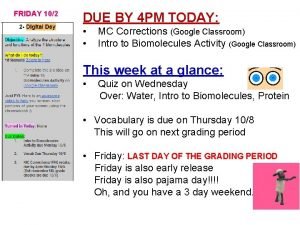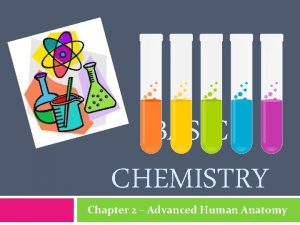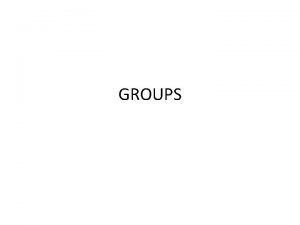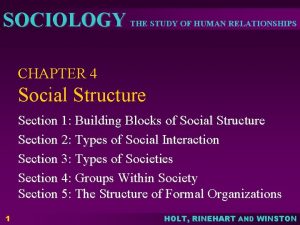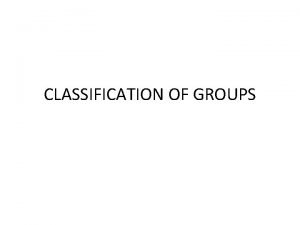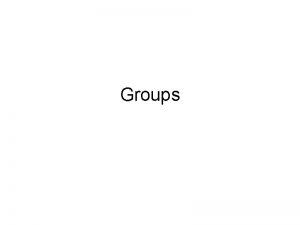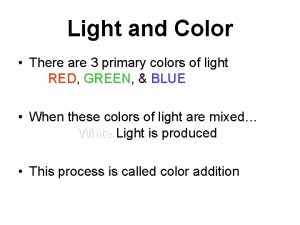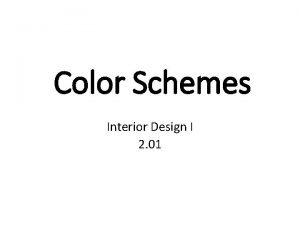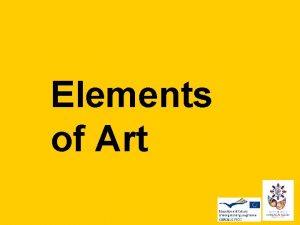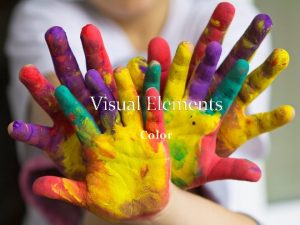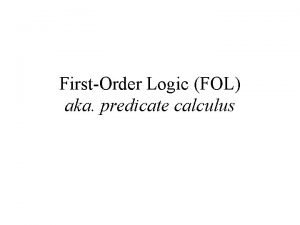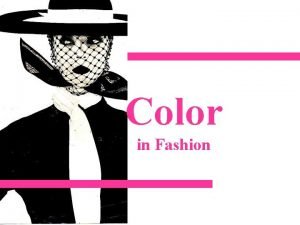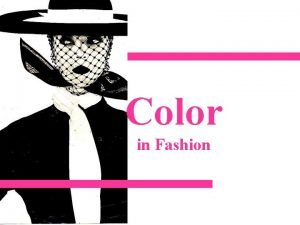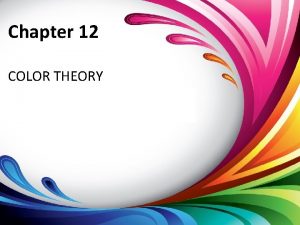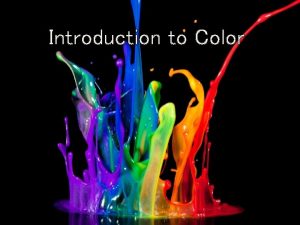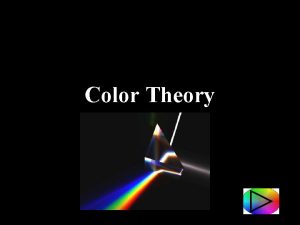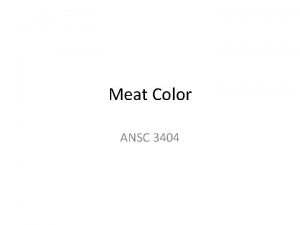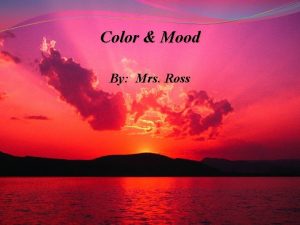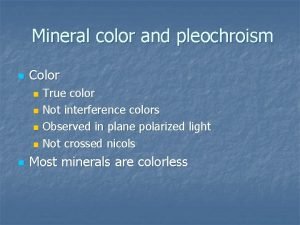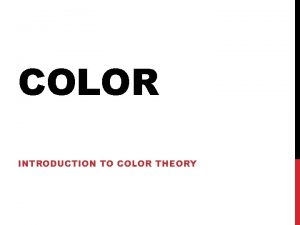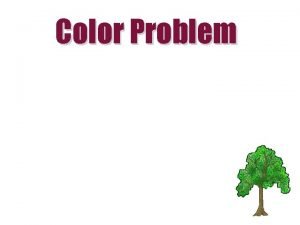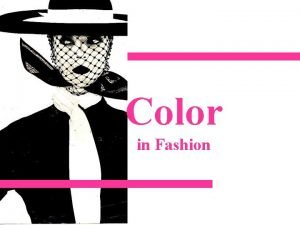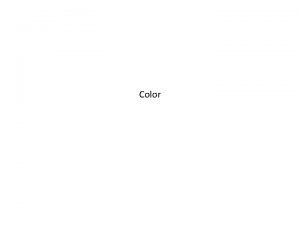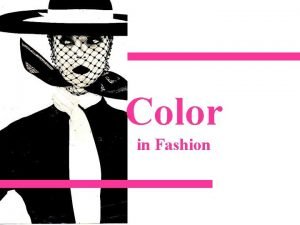Color Primary color Primary color A group of






























- Slides: 30

Color

Primary color

Primary color A group of colors from which all other colors can be obtained by mixing.

Secondary color

Secondary color • a color resulting from the mixing of two primary colors.

Tertiary colors

Tertiary colors • Tertiary colors are combinations of primary and secondary colors. • There are six tertiary colors: • • • red-orange yellow-green blue-violet red-violet.

Tint

Tint • The mixture of a color with white, which increases lightness • Red + white=pink

Shade

Shade • The mixture of a color with black, which reduces lightness

Tint or Shade 1. 2. 3. 4. 5. 6.

Tone

Tone • The mixture of a color with gray, or by both tinting and shading

Complimentary colors

Complimentary colors • Colors opposite each other on the color wheel • When placed next to each other, they create the strongest contrast for those particular two colors. • When combined, cancel each other out. This means that when they are combined, they produce a brown or grey-scale color

Analogous colors

Analogous colors • Groups of three colors that are next to each other on the color wheel • One color is the dominant color, which tends to be a primary or secondary color, and one on either side of the color. • Red, red-orange, and red-violet are examples

Warm colors

Warm colors • The yellows, oranges, and reds of the color spectrum, associated with fire, heat, sun, and warmer temperatures

Cool colors

Cool colors • The greens, blues, and purples of the color spectrum, associated with water, sky, ice, and cooler temperatures

Monochromatic

Monochromatic • All the colors (tints, tones, and shades) of a single hue.



Rubric • Composition • Craftsmanship • Creativity • Procedure • Effort

Color wheels using found object patterns • Measure center point of paper • Use compass to divide paper in six equal sections • 60 degrees each • How many degrees in a circle? • Design a pattern, using your found object that fills one of your six sections • Divide it into different subsections for tints, tones, and shades • Remember negative space • • • Create a pattern in the other sections Using paint, start with a tint of each color Add saturation to each color as it gets closer to the mid point Continue to create shades with the color as it nears the center The center sections will become nearly black (Or reverse the order where the center is nearly white and the edges are nearly black)

Rubric • Composition • Craftsmanship • Creativity • Procedure • Effort

Questions?
 Ap psych social trap
Ap psych social trap Y = a(b)^x
Y = a(b)^x Anova within group and between group
Anova within group and between group Social group examples
Social group examples Imt group 2 specialties
Imt group 2 specialties Thermal decomposition of group 1 nitrates
Thermal decomposition of group 1 nitrates Amino group and carboxyl group
Amino group and carboxyl group Amino group and carboxyl group
Amino group and carboxyl group In group out group
In group out group Group yourself or group yourselves
Group yourself or group yourselves William graham sumner in group out group
William graham sumner in group out group Joining together group theory and group skills
Joining together group theory and group skills What is a primary group in sociology
What is a primary group in sociology Lifeboat game sociology
Lifeboat game sociology Which group is a primary supporter of hunter education?
Which group is a primary supporter of hunter education? Outline the characteristics of primary groups
Outline the characteristics of primary groups Behavior that matches group expectations
Behavior that matches group expectations Secondary group examples
Secondary group examples The primary pigments are _____ the primary colors.
The primary pigments are _____ the primary colors. The primary pigment colors are
The primary pigment colors are Tetrad color scheme interior design
Tetrad color scheme interior design 3 basic colors
3 basic colors Color spectrum bent into a circle
Color spectrum bent into a circle Color groupings that provide distinct color harmonies
Color groupings that provide distinct color harmonies Forward chaining
Forward chaining Xxxxxxx group
Xxxxxxx group Group discussion strategies
Group discussion strategies 415 group
415 group Informal group norms
Informal group norms Crisis communication working group
Crisis communication working group Differences between group and team
Differences between group and team






